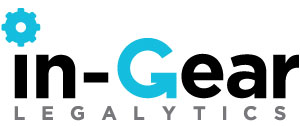
For Corporations
Contract Management: the First Step to Mine Data in Your Business
The legal department of a multinational company was given a mandate to rationalize its resource deployment. As part of that mandate, it decided to reduce the time its in-house lawyers spent on contract review and hired several contract managers to meet the business’s operational needs while increasing its available lawyer resources. Contract management software was also being utilized as part of this initiative. While adoption of the contract management software was slow, assignment of certain repeatable tasks to these contract managers (in areas like global commodities purchasing) did relieve in-house lawyers to focus on other demands. On the other hand, the job satisfaction of the contract managers was low. Particularly in certain emerging markets, the company was plagued by high turnover among contract managers who often complained about challenges in the division of labor. Furthermore, whenever additional contract managers were hired to allocate demand across a wider set of resources, the demand simply increased to the point where no relief was ever achieved. In addition to the above challenges, the regional general counsel hoped to improve institutional knowledge and know-how by leveraging contract management.
Kenny designed and implemented a multi-phase pilot program to address these issues. First, we engaged stakeholders involved in key account management (KAM) to collect their views on the strengths and weaknesses in the existing contracting process. This analysis revealed common challenges related to turn around time and poor archiving. We applied a 6-Sigma and Lean based process mapping exercise involving existing and potential participants to smooth out each ambiguous hand-off and bottleneck, with minimal reassignment and disruption of each stakeholders’ job description and existing organization.
After a short period of testing and validation, the KAM function and other functions (including finance, manufacturing, quality and supply chain) all signed off on the reformed workflow. We proceeded to work with the client’s IT team to customize their underutilized contract management system to effectuate and support the revised process. At this stage, the company also decided to enhance the system with additional capabilities such as contract life cycle tracking, reminders to relevant stakeholders for expirations and action points, and even automated a few tools based on calculations supported by the finance function in frequently encountered negotiation points. At the request of the finance function, we also established links to the system supplying timely data feeds that supported management of accounts receivable and collections.
Finally, we facilitated the creation of additional modules to provide the sales force immediate negotiation support. These contract negotiation modules were created with the input of the legal department, quality control and finance so that in the event a “fall back” provision was selected over the course of a negotiation, the sales person would immediately be able to see the impact of the revised term on the value proposition offered by the proposed deal. The legal department also benefitted by now having visibility into approved contract templates and backup provisions utilized by the entire global organization allowing it to link certain contract terms with disputes and therefore shifting to a preventative rather than reactive risk management posture.
Building on the success of the KAM pilot program, the corporation was able to apply this process methodology to other sales practices, including the use of purchase orders in lieu of contracts for certain goods.
